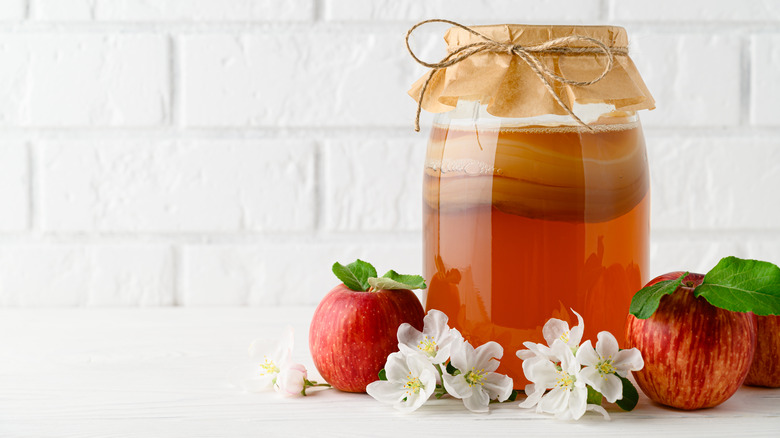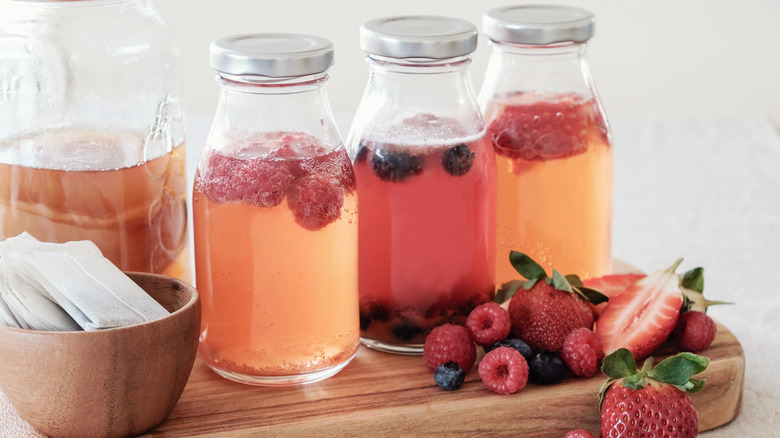When Is The Best Time To Add Flavor To Your Kombucha?
Unless you've been living under a rock for the past couple of decades, you've heard — and likely consumed a whole bunch — of kombucha, the fizzy, fermented sweetened tea that's lauded for its refreshing taste and health-promoting probiotic content (via Michelin). Kombucha is made by adding sugar to brewed black or green tea and popping in a SCOBY, a colony of bacteria and yeast that forms a thick, gel-like disc atop the liquid (via Kitchn). Over the course of about a week, this colony consumes most of the sugar in the tea, resulting in a pleasantly sour drink that also takes on a nice carbonation after undergoing a so-called "second fermentation" in sealed bottles that trap the carbonation inside the kombucha (via Live Eat Learn).
There are so many kombucha brands on the market these days that it can be hard to keep count of them. But one thing nearly all of them have in common is that they offer a wide range of flavors, from Health-Ade's apple to GT's ginger to KeVita's pineapple peach. If you choose to make kombucha at home, you might be wondering: How do I get flavorings into my brew, and at what stage of fermentation do I add it?
Add any flavorings to individual bottles during the second fermentation
According to The Kitchn, kombucha is typically brewed in a large glass jar that's covered with a breathable cloth such as cheesecloth or a tea towel, which lets oxygen in but keeps any bugs out. And although it might seem like this initial fermentation would be a good time to add any kombucha flavoring such as fresh fruit, fruit juice, spices, or fresh herbs, you actually have to wait until the so-called second fermentation to flavor your kombucha.
As explained by The Kitchn, the second fermentation of kombucha takes place after about 7 to 10 days, when the initial fermentation is complete and the drink is ready to be bottled. This is the time to add flavorings: Naturally sweet ingredients such as fruit and fruit juice will add an extra amount of sugar for the SCOBY bacteria to consume, releasing carbonation as a result. Sealing the kombucha in an airtight bottle will trap that carbonation, creating the nice fizz we all crave in kombucha.
To flavor yours, Live Eat Learn recommends pouring the kombucha into airtight bottles — leaving a little room at the top for the gas that will build up inside — and adding ingredients such as fresh fruit, capping the bottles, and letting them ferment an additional three to 10 days in a cool, dark place. Then, transfer the bottles to your refrigerator to chill them and stop the fermentation, and enjoy your perfectly flavored, fizzy kombucha.

